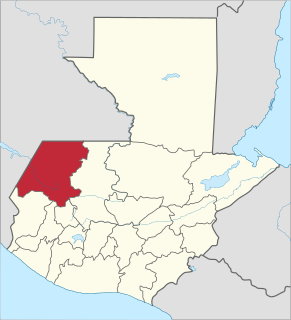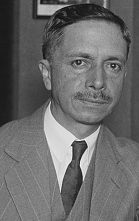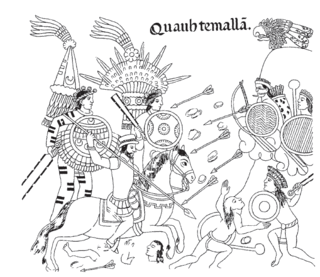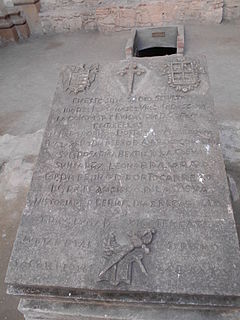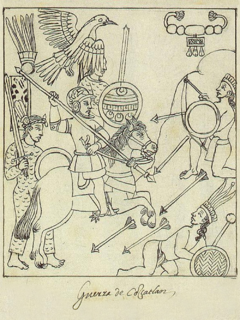Kayb'il B'alam (alternatively written Kaibil Balam) was a 16th-century leader of the Mam people in the Maya kingdom in the western highlands of Guatemala. [1] During the time of the Spanish invasion, the Mam population was mainly situated in Xinabahul (now modern-day Huehuetenango). However, due to the Spanish conquest, the people returned to the stone fortifications of Zaculeu for protection.
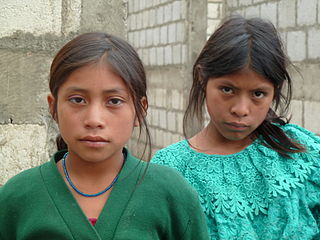
The Mam are an indigenous people in the western highlands of Guatemala and in south-western Mexico who speak the Mam language.

Guatemala, officially the Republic of Guatemala, is a country in Central America bordered by Mexico to the north and west, Belize and the Caribbean to the northeast, Honduras to the east, El Salvador to the southeast and the Pacific Ocean to the south. With an estimated population of around 16.6 million, it is the most populated country in Central America. Guatemala is a representative democracy; its capital and largest city is Nueva Guatemala de la Asunción, also known as Guatemala City.

The Spanish conquest of Guatemala was a protracted conflict during the Spanish colonization of the Americas, in which Spanish colonisers gradually incorporated the territory that became the modern country of Guatemala into the colonial Viceroyalty of New Spain. Before the conquest, this territory contained a number of competing Mesoamerican kingdoms, the majority of which were Maya. Many conquistadors viewed the Maya as "infidels" who needed to be forcefully converted and pacified, disregarding the achievements of their civilization. The first contact between the Maya and European explorers came in the early 16th century when a Spanish ship sailing from Panama to Santo Domingo was wrecked on the east coast of the Yucatán Peninsula in 1511. Several Spanish expeditions followed in 1517 and 1519, making landfall on various parts of the Yucatán coast. The Spanish conquest of the Maya was a prolonged affair; the Maya kingdoms resisted integration into the Spanish Empire with such tenacity that their defeat took almost two centuries.
The city was attacked in 1525 by conquistador Gonzalo de Alvarado y Contreras, brother of Pedro de Alvarado. [2] Kayb'il B'alam and his warriors successfully repelled the attempted siege by the Spanish forces for several months until being forced to surrender after being reduced to the verge of starvation. [3]
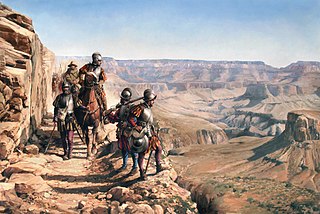
Conquistador is a term widely used to refer to the knights, soldiers and explorers of the Spanish Empire and the Portuguese Empire. During the Age of Discovery, conquistadors sailed beyond Europe to the Americas, Oceania, Africa, and Asia, conquering territory and opening trade routes. They colonized much of the world for Spain and Portugal in the 16th, 17th, and 18th centuries.
Gonzalo de Alvarado was the name of two Spanish conquistadors, both related to Pedro de Alvarado and participating in the conquest of Mexico and Central America. Gonzalo de Alvarado y Contreras was his brother, while Gonzalo de Alvarado y Chávez was his cousin.

Pedro de Alvarado y Contreras was a Spanish conquistador and governor of Guatemala. He participated in the conquest of Cuba, in Juan de Grijalva's exploration of the coasts of the Yucatán Peninsula and the Gulf of Mexico, and in the conquest of Mexico led by Hernán Cortés. He is considered the conquistador of much of Central America, including Guatemala, Honduras and El Salvador. Although renowned for his skill as a soldier, Alvarado is known also for the cruelty of his treatment of native populations, and mass murders committed in the subjugation of the native peoples of Mexico.
In 1975, the Guatemalan Army created a special operations force, the Kaibiles, named after Kayb'il B'alam. The group is centered out of Huehuetenango ("Land of the Old") some 5 km from the original stand off site at Zaculeu.
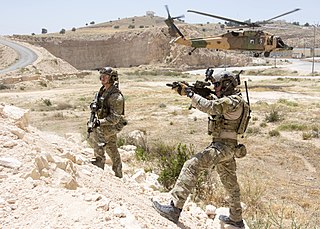
Special operations (S.O.) are military, law enforcement or intelligence operations that are "special" or unconventional and carried out by dedicated special forces and other special operations forces units using unconventional methods and resources. Special operations may be performed independently, or in conjunction with conventional military operations. The primary goal is to achieve a political or military objective where a conventional force requirement does not exist or might adversely affect the overall strategic outcome. Special operations are usually conducted in a low-profile manner that aims to achieve the advantages of speed, surprise, and violence of action against an unsuspecting target. Special ops are typically carried out with limited numbers of highly trained personnel that are adaptable, self-reliant and able to operate in all environments, and able to use unconventional combat skills and equipment. Special operations are usually implemented through specific, tailored intelligence.
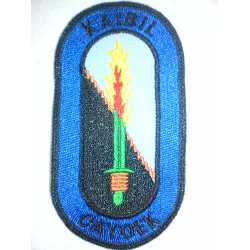
The Kaibiles are a special operations wing of the Armed Forces of Guatemala. They specialize in jungle warfare tactics and counter-insurgency operations.

Huehuetenango is a city and a municipality in the highlands of western Guatemala. It is also the capital of the department of Huehuetenango. The municipality's population was over 81,000 people in 2002. The city is 269 kilometres (167 mi) from Guatemala City, and is the last departmental capital on the Pan-American Highway before the Mexican border at La Mesilla.


